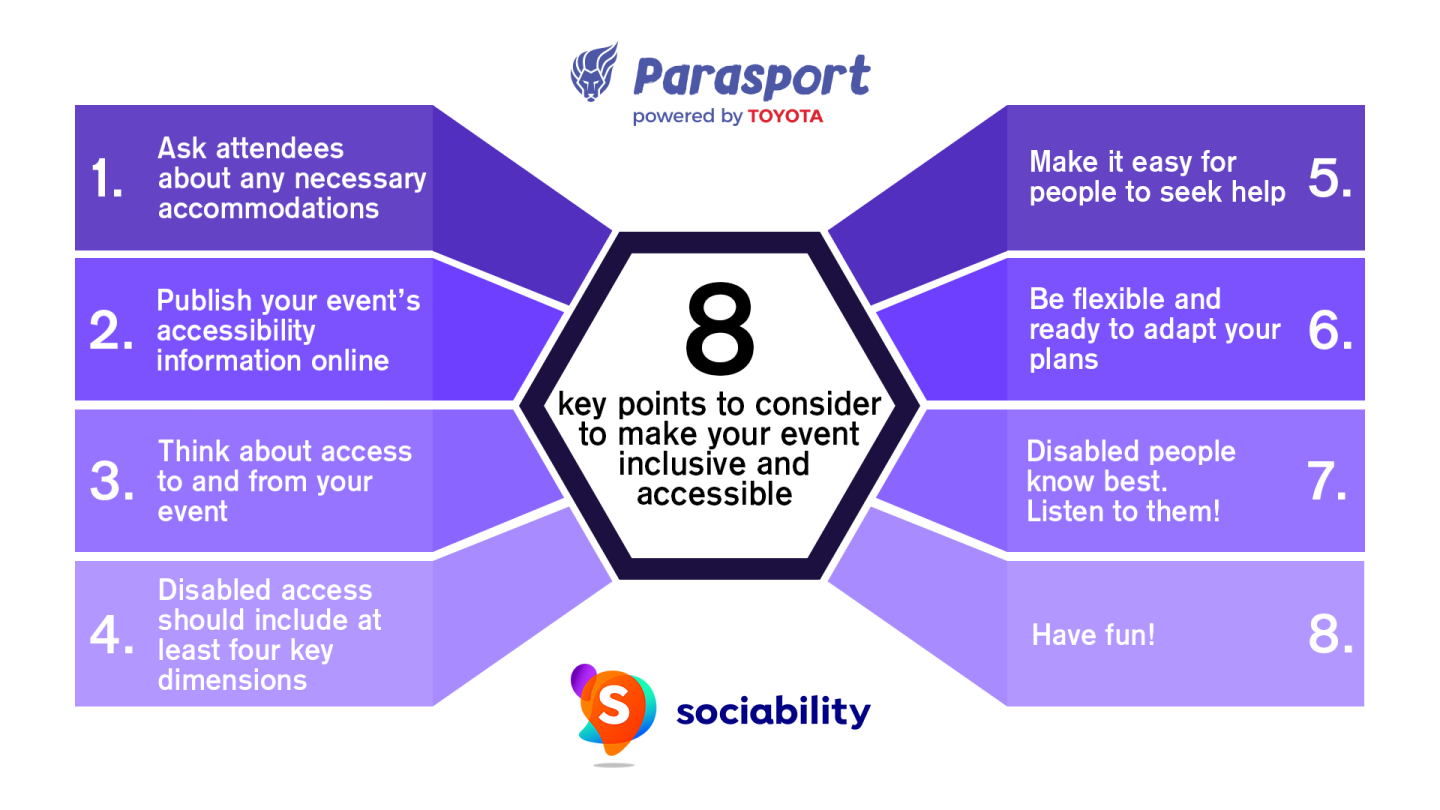Check out our top tips for creating an inclusive and accessible event

In preparation for #ThankYouDay on Sunday 5th June we have teamed up with Sociability to come up with 8 top tips to making your event inclusive and accessible for all...
1. Ask attendees about any necessary accommodations
Ask any attendees if they have accessibility requirements that you should be aware of in advance.
Give them an option to share these anonymously if they wish.
2. Publish your event's accessibility information online
Provide easy-to-find and publicly available details about the accessibility of your event's location, activities and transport options. When thinking about accessibility – remember that there are lots of types of disabilities, both invisible and visible
3. Think about access to and from your event
When choosing a location for your event, ensure there are a range of options for disabled people to get to and from in a way that is convenient and cost-effective. Remember that public transport options are not always easy or viable options for disabled people.
4. Disabled access should include at least four key dimensions
Disabilities can relate to a range of issues – including mobility, hearing, visual or other sensory and cognitive impairments.
Try to think broadly when considering options to make your event location and activities as accessible as possible.
5. Make it easy for people to seek help
Disabled people are typically expected to raise their hands for help, or to proactively alert organisers to their needs.
Reverse this burden by making it as easy as possible for disabled people to find help and to share their needs in a warm and friendly way.
6. Be flexible and ready to adapt your plans
Ultimately, every disabled person is different and conditions can change on the day, at any time.
To be as accessible as possible, it is important to keep an open mind and be comfortable with changing plans whenever you need to. Similarly, think about how emergency plans (eg. in the event of fire) need to be adapted for disabled attendees too.
7. Disabled people know best. Listen to them!
It is perhaps most important to remember that the disabled person knows their body and their needs best.
If someone says they need X or can do Y, always trust their judgment and do your best to help facilitate whatever they might need.
8. Have fun!
Whilst disability or making your event accessible might seem scary or foreign, ultimately it is all about letting people participate in an activity and enjoy themselves in an equal way. Remember that, deep down, everyone loves being included, having fun and enjoying themselves in a safe and comfortable way. If you keep this in mind, you'll have a great time!
Preparing for #ThankYouDay?
Find out more about Thank You Day happening on Sunday 5th June by clicking the link below.
Find out more